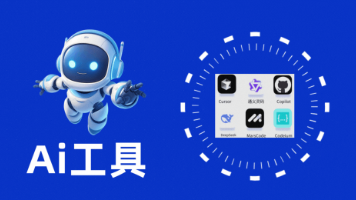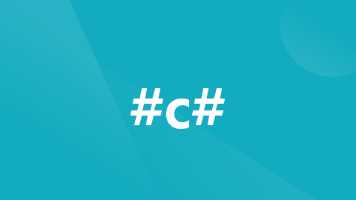Jetpack系列教程(十二):ConstrainLayout——Android布局界的“乐高大师“
本文介绍了Android Jetpack中的ConstraintLayout布局容器,它被形象地比喻为"乐高大师"的积木工具。文章从三个维度展开:首先对比传统布局的局限,突出ConstraintLayout的扁平化结构和动态适配优势;其次详解基础搭建方法,包括添加依赖、创建布局和放置组件;最后展示进阶技巧如0dp魔法、链式分布和辅助线应用,并通过登录界面案例演示实战应用。全文以
Jetpack系列教程(十二):ConstrainLayout——Android布局界的"乐高大师"
各位Android开发界的"乐高玩家"们,今天我们要聊的是Jetpack家族中最会"搭积木"的成员——ConstraintLayout!这个布局容器就像乐高大师手中的魔法积木,能让你的UI既灵活又稳固,还能自动适应各种奇葩屏幕尺寸。准备好迎接这场布局界的"积木狂欢"了吗?[3]
一、为什么说ConstraintLayout是"乐高大师"?
想象一下,你要用传统布局实现一个登录界面:RelativeLayout像用胶水粘积木,嵌套多了就容易散架;LinearLayout像排积木火车,转弯就翻车;FrameLayout更像把积木全倒进盒子里,乱成一团。而ConstraintLayout就像拥有磁力积木,每个组件都能精准吸附到指定位置![3]
核心优势:
- 🧩 扁平化结构:告别"俄罗斯套娃"式嵌套,性能提升堪比SSD替代HDD
- 🎮 动态适配:自动调整布局就像乐高积木能变形成机器人
- 🧙 魔法约束:通过相对定位实现"这个按钮在输入框下方16dp"的精准控制
二、基础搭建:从零开始的乐高城堡
1. 添加依赖(给城堡装上魔法齿轮)
implementation 'androidx.constraintlayout:constraintlayout:2.1.4'
小贴士:就像乐高需要正确拼装说明书,这个依赖是开启魔法布局的钥匙[3]
2. 创建第一个约束布局(搭建城堡地基)
<androidx.constraintlayout.widget.ConstraintLayout
xmlns:android="http://schemas.android.com/apk/res/android"
xmlns:app="http://schemas.android.com/apk/res-auto"
android:layout_width="match_parent"
android:layout_height="match_parent">
<!-- 这里将搭建我们的乐高城堡 -->
</androidx.constraintlayout.widget.ConstraintLayout>
3. 放置第一个组件(放下第一块积木)
<Button
android:id="@+id/magicButton"
android:layout_width="wrap_content"
android:layout_height="wrap_content"
android:text="点击变形"
app:layout_constraintTop_toTopOf="parent"
app:layout_constraintStart_toStartOf="parent"
app:layout_constraintEnd_toEndOf="parent"
android:layout_marginTop="32dp"/>
魔法解析:这个按钮会像乐高积木一样,顶部对齐父容器,水平居中,上方留出32dp的魔法间距[3]
三、进阶技巧:乐高大师的秘密武器
1. 0dp魔法(让积木自动伸缩)
<EditText
android:id="@+id/usernameInput"
android:layout_width="0dp" <!-- 关键魔法 -->
android:layout_height="wrap_content"
app:layout_constraintStart_toStartOf="parent"
app:layout_constraintEnd_toEndOf="parent"
app:layout_constraintTop_toBottomOf="@id/magicButton"
android:layout_margin="16dp"/>
原理揭秘:0dp不是真零宽度,而是"用两端约束的距离决定宽度",就像乐高积木能自动适应拼装空间[3]
2. 链式分布(积木排队艺术)
<!-- 水平链式分布 -->
<Button
android:id="@+id/btn1"
...
app:layout_constraintHorizontal_chainStyle="packed"
app:layout_constraintStart_toStartOf="parent"
app:layout_constraintEnd_toStartOf="@id/btn2"/>
<Button
android:id="@+id/btn2"
...
app:layout_constraintStart_toEndOf="@id/btn1"
app:layout_constraintEnd_toStartOf="@id/btn3"/>
<Button
android:id="@+id/btn3"
...
app:layout_constraintStart_toEndOf="@id/btn2"
app:layout_constraintEnd_toEndOf="parent"/>
效果展示:三个按钮会像乐高小火车一样紧密排列,packed模式让它们居中聚集[3]
3. 辅助线与屏障(搭建隐形脚手架)
<!-- 创建一条距离顶部20%的辅助线 -->
<androidx.constraintlayout.widget.Guideline
android:id="@+id/guideline"
android:layout_width="wrap_content"
android:layout_height="wrap_content"
android:orientation="horizontal"
app:layout_constraintGuide_percent="0.2"/>
<!-- 文本右边缘屏障 -->
<androidx.constraintlayout.widget.Barrier
android:id="@+id/barrier"
android:layout_width="wrap_content"
android:layout_height="wrap_content"
app:barrierDirection="end"
app:constraint_referenced_ids="tvTitle,tvSubtitle"/>
实用场景:辅助线像乐高积木的定位销,屏障则能自动适应最长文本的宽度[3]
四、实战案例:搭建乐高太空站
登录界面实现(魔法组合技)
<androidx.constraintlayout.widget.ConstraintLayout
...>
<!-- 1. 头像(圆形乐高积木) -->
<ImageView
android:id="@+id/avatar"
android:layout_width="100dp"
android:layout_height="100dp"
android:src="@drawable/ic_astronaut"
app:layout_constraintTop_toTopOf="parent"
app:layout_constraintStart_toStartOf="parent"
app:layout_constraintEnd_toEndOf="parent"
android:layout_marginTop="48dp"
app:layout_constraintDimensionRatio="1:1"/>
<!-- 2. 用户名输入框 -->
<EditText
android:id="@+id/etUsername"
android:layout_width="0dp"
android:layout_height="wrap_content"
android:hint="太空站编号"
app:layout_constraintTop_toBottomOf="@id/avatar"
app:layout_constraintStart_toStartOf="parent"
app:layout_constraintEnd_toEndOf="parent"
android:layout_margin="16dp"/>
<!-- 3. 密码输入框 -->
<EditText
android:id="@+id/etPassword"
android:layout_width="0dp"
android:layout_height="wrap_content"
android:hint="星际密码"
android:inputType="textPassword"
app:layout_constraintTop_toBottomOf="@id/etUsername"
app:layout_constraintStart_toStartOf="parent"
app:layout_constraintEnd_toEndOf="parent"
android:layout_margin="16dp"/>
<!-- 4. 登录按钮(带偏移的火箭发射台) -->
<Button
android:id="@+id/btnLogin"
android:layout_width="0dp"
android:layout_height="wrap_content"
android:text="发射!"
app:layout_constraintTop_toBottomOf="@id/etPassword"
app:layout_constraintStart_toStartOf="parent"
app:layout_constraintEnd_toEndOf="parent"
android:layout_margin="16dp"
app:layout_constraintHorizontal_bias="0.7"/>
</androidx.constraintlayout.widget.ConstraintLayout>
效果说明:头像居中显示,输入框自动填充宽度,登录按钮向右偏移30%(0.7偏移量),就像火箭发射台微微倾斜准备升空[3]
五、调试秘籍:乐高大师的修理工具箱
常见问题解决方案
-
"Missing constraints"警告
➡️ 就像乐高积木缺少关键连接件,检查每个视图是否至少有水平和垂直各两个约束 -
布局显示错位
➡️ 使用Android Studio的Blueprint视图(设计界面右上角按钮),像检查乐高说明书一样查看所有约束线 -
动态修改布局
// 运行时修改约束的魔法咒语 val constraintSet = ConstraintSet() constraintSet.clone(constraintLayout) constraintSet.connect(R.id.btnLogin, ConstraintSet.TOP, R.id.etPassword, ConstraintSet.BOTTOM, 32) TransitionManager.beginDelayedTransition(constraintLayout) constraintSet.applyTo(constraintLayout)
六、进阶挑战:乐高大师认证考试
实战练习题
-
实现一个聊天界面
要求:消息气泡自动左右对齐,图片消息与文本消息混合排列 -
动态表单生成
要求:根据API返回的字段列表动态生成表单,使用ConstraintLayout避免嵌套 -
响应式仪表盘
要求:卡片布局随屏幕旋转自动重新排列,使用Guideline和Barrier保持布局整洁
提示:就像乐高大师能用基础积木搭建复杂模型,这些挑战都能通过组合本文介绍的技巧实现[3]
结语:成为ConstraintLayout乐高大师
现在你已经掌握了ConstraintLayout的核心魔法,就像拥有了乐高大师的黄金工具箱。记住这些原则:
- 🧩 约束即关系:每个组件的位置都是与其他组件的"对话"
- 🎯 少即是多:用最少的约束实现最灵活的布局
- 🔮 动态思维:想象布局在不同屏幕尺寸下的"变形"过程
下次当产品经理提出"这个界面要适配所有设备"的需求时,你就可以露出神秘的微笑:“让我用ConstraintLayout来变个魔术吧!”[3]
更多推荐
 已为社区贡献1条内容
已为社区贡献1条内容








所有评论(0)